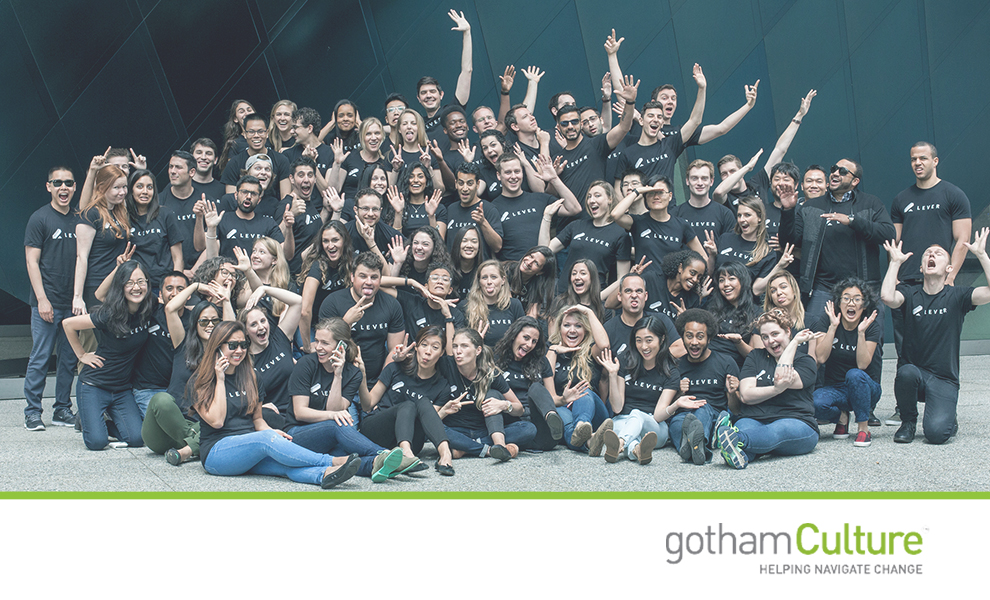For many rapidly-growing organizations, hiring the best talent available is priority number one. But when done poorly, a poor recruiting process can cost your company more than you might expect.
A recent Harvard Business School study found that avoiding a toxic worker was worth about $12,500 in turnover costs. And according to ERE Media, it can cost even more to replace them. Entry-level employees cost between 30-50 percent of their annual salary to replace. For mid-level employees, that number climbs to upwards of 150 percent of their annual salary.
Tangential effects of a poor recruiting process can also affect your bottom line. A typical year of recruiting at Virgin Media, for example, costs the company an estimated $6 million in lost revenue by upsetting over 7,500 customer applicants.
Any business leader worth their weight will acknowledge that their success is largely the result of the team they have built. Finding the best people to move your business strategy forward while ensuring that they do so in ways that amplify your culture (rather than derailing it) can be a tall ask. Especially in small organizations that are hiring and growing at lightning speed.
All too often, the pressures of filling open positions can tempt hiring managers to cut corners in terms of culture fit in order to keep up with the growth curve. To make matters worse, the recruiting processes that have been the staple of organizational life for decades seem to serve as their own barrier to finding the best quality talent for your organization.
The Recruiting Game Has Changed
In decades past, when the cards in the hiring process were largely held by employers, candidates were forced to bend to their will if they ever hoped to land that next dream job. But things are changing.
Many in the talent space would argue that today, the power resides with the candidates. Companies are forced to find new ways to cultivate relationships not only with current applicants but with a passive talent pool who may someday decide that their organization is a place that they want to be.
 I recently sat down with Leela Srinivasan, Chief Marketing Officer of the San Francisco-based hiring software firm Lever, and Phil Hendrickson, Chief Talent Strategist at Qwalify, an engagement platform for enterprise recruiting, to learn more.
I recently sat down with Leela Srinivasan, Chief Marketing Officer of the San Francisco-based hiring software firm Lever, and Phil Hendrickson, Chief Talent Strategist at Qwalify, an engagement platform for enterprise recruiting, to learn more.
“Hiring today is not about vetting applicants who are eager to work for your company”, says Srinivasan. “In today’s business environment, the balance of power rests with the candidates. Today, recruiting is more about mutual evaluation and finding the right fit.”
Finding the right fit and mutual evaluation inevitably requires more interaction and more time and energy. And in order to evolve the talent process to meet this new operating environment, companies are leveraging technology to do a lot of the heavy lifting for them.
The more that organizations can rely on technology to support the process, the faster they can meet the needs of the hiring managers. Still, relying too heavily on technology has its own drawbacks.
“Lack of engagement is perhaps the biggest gap created by recruiting technology,” says Hendrickson. “It makes people feel as though they are not seen or heard when they try and apply for a job. They end up in a ‘black hole’ after spending time trying to introduce themselves to a company. This creates a dangerous cascade that works against a company’s ability to remain competitive in the talent marketplace.”
5 Ways to Improve Your Recruiting Process
So, what can business leaders do to ensure that their recruiting processes are truly maximizing their organization’s ability to attract and retain the best possible talent as they grow? I asked Leela and Phil for their expert advice.
- Make recruiting everyone’s responsibility. When internal stakeholders distance themselves from the recruiting process, you lose the ability for both the organization and the candidate to establish personal relationships and you reduce the level of mutual understanding. Without this, it makes it extremely difficult for people to make decisions about the potential fit. “People don’t generally join an organization just because they hit it off really well with the recruiter,” Srinivasan adds. “Fit is about gaining a broad understanding via interactions with multiple people in an organization.”
- Invest in your tools and processes. Establishing a clear recruiting process that leverages current best practices is the first step. In doing so, many will find that there are any number of tools and technology products out there that may serve to help make the recruiting process more effective and more efficient. Don’t underestimate the power of usability: well-designed tools that take friction out of your hiring process will be more widely adopted by your employees, and will save you time in the long run.
- Provide the right resources to your team. Providing the right guidance to your team throughout the recruiting process will ensure that they are set up for success. They should be evaluating candidates on various dimensions throughout the process, as opposed to rehashing things that have already come up in previous stages. They should also be probing beneath the surface of a candidate’s answers to get useful insight into their skills and experience. This will likely require some form of interview training, so people feel ready to support the process when the time comes.
- Culture is critical to the process. This is even more poignant within small companies that are scaling rapidly. Every hire can impact the culture and business trajectory, but the pressures to fill roles when the organization is growing at exponential rates can present quite the dilemma for recruiters and hiring managers. “There can be an inherent risk and a trade-off between quality and fit, and it’s important not to give in to that pressure,” says Srinivasan. “You really need to ask yourself how that person may impact the culture of the organization in the long-term.”
- Invest in onboarding and retention. After you’ve found the perfect candidate, another job has just begun. Hendrickson points out that “too many companies spend wisely on talent acquisition activities only to watch their prize hires walk out the door because there was insufficient investment in retaining them.” Make sure your onboarding process is setting up your new team members for success.
Your recruiting process says a lot about your company. What you truly value. Your viewpoint on employees. The extent to which different functions within the organization truly collaborate (or not).
Technology is constantly evolving to relieve many of the more transactional aspects of the recruiting process, but it doesn’t mean that the entire process can be automated. Rather, the time that is freed up due to automation can be better spent doing the things only people can do: connecting, building relationships, etc.
Organizations of all sizes must thoughtfully educate people, both internally and externally, on the brand and culture. Those that are most adept at creating transparent views into their organizations for candidates are those that will likely find themselves better positioned to attract the best talent as they grow.
This article originally appeared on Forbes.

